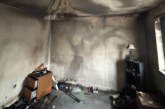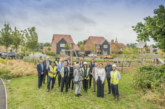 LABM has teamed up with ARPAS-UK — the UK drone trade industry association — and Connected Places Catapult, who provide impartial ‘innovation as a service’ for public bodies, businesses, and infrastructure providers, to offer advice on drone technology for repairs and maintenance programmes. In this first article, Graham Brown, CEO of ARPAS-UK and David Pounder, Systems Engineer at Connected Places Catapult, discuss the economic benefits of using drones and why local authorities need to build drones into their solutions to improve monitoring and inspection effectiveness across the asset portfolio.
LABM has teamed up with ARPAS-UK — the UK drone trade industry association — and Connected Places Catapult, who provide impartial ‘innovation as a service’ for public bodies, businesses, and infrastructure providers, to offer advice on drone technology for repairs and maintenance programmes. In this first article, Graham Brown, CEO of ARPAS-UK and David Pounder, Systems Engineer at Connected Places Catapult, discuss the economic benefits of using drones and why local authorities need to build drones into their solutions to improve monitoring and inspection effectiveness across the asset portfolio.
From NHS Trust hospitals and defence estates to municipal buildings and social housing, the ‘Forth Bridge’ of never-ending inspection and maintenance stakes a claim for a major chunk of funding. In social housing alone, more than £6.3bn annually is spent across the UK on repairs and maintenance. In answer to the significant costs and safety challenges of working at height, local authorities and social housing agencies are increasingly using drones with remarkable cost savings, such as £4m across a high-rise estate in Renfrewshire, Scotland.
Renfrewshire Council
Let’s drill down on the example in Renfrewshire, as explained by Duncan Smith, Housing Asset and Energy Strategy Manager. The service provider for the drone programme is Neil Mowbray, owner of Viewpoint UAV.
Duncan says: “Renfrewshire Council owns roughly 12,000 properties in their social housing portfolio consisting of two five-story low-rise accommodation and 14 high-rise towers, all of which require regular maintenance. Part of the maintenance programme is building envelope and roof inspections. Until 2016, the council had been using Mobile Elevated Working Platforms (MEWP) and scaffolding to perform this task.
“At today’s prices, a MEWP large enough to perform these inspections in the manner which they are required is roughly £1,000/day and it can perform inspections on three properties maximum in a day (assuming they are all close by each other). Scaffolding is another matter whereby it takes between four and six days to erect, inspect and take down all at a cost of roughly £4,000 – £5,000. Considering the price of a single drone survey, there is a difference of between 85% & 97% in price per property.”
Data collection
Duncan continues: “Although the cost savings on the actual inspections are considerable, the major savings have been in the ability to quickly assess the data and then allocate funds accordingly. Previously, the standard procedures had been that a roof tile with a 30-year life span would be slated to be replaced at the end of its advertised life span, however the data collected by drones allowed the council to assess the health of the roof structure and decide to maintain for another two, five or 10 years.
“With traditional methods, the data gathering would have been too slow for this process to be effective. In one year alone, this methodology saved the council £4m+ and allowed an entire programme of inspections to be carried out in under two months (as opposed to multiple years for the same scope of project with traditional methods).”
Drone adoption
In summary, the rationale for adoption of drones includes:
● More accurate, efficient and safe capture of data
● Greater insight into integrity of your assets
● Improved scheduling of maintenance programmes due to data-led decisions
● Significant reduction in expense overall
● Reduced disruption and better maintenance outcomes for residents
As part of the UK Government funded Pathfinder Catalyst Programme, ARPASUK and Connected Places Catapult have been partnering with housing associations and drone solution providers to run live demonstrations and showcase the benefits that drone services can offer. Additionally, a number of CPD sessions are planned during 2022 covering various use cases of drones.
In the next article, we will examine the array of technology options and how to select the best service providers to deliver solutions for your organisation.









